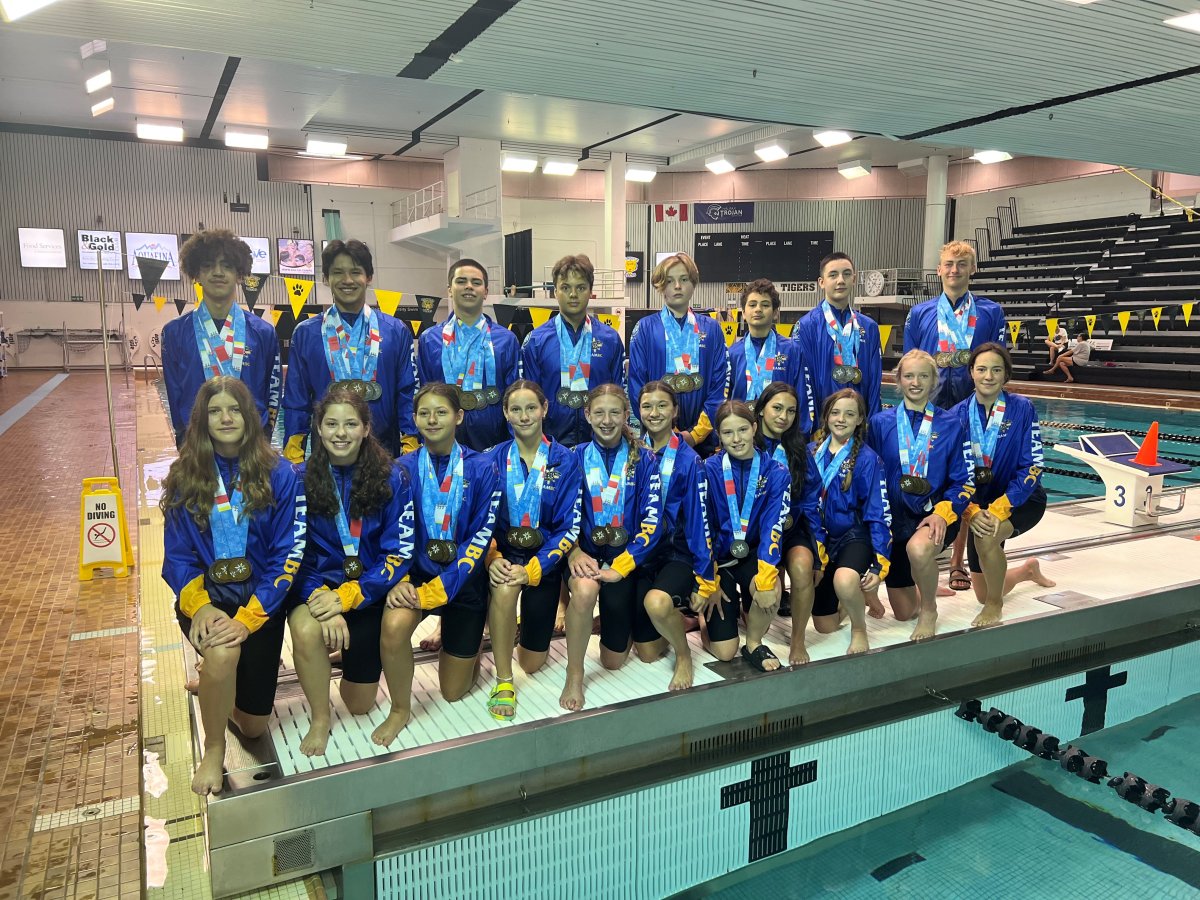Looking for more Indigenous news? Find our stories here.

The North American Indigenous Games (NAIG) wrapped up in Halifax, N.S., on Sunday after more than 5,000 young Indigenous athletes travelled to Mi’kma’ki to participate in 16 different sports.
Some of those athletes – Preston Seneviratne, Izzy Senevirante and Kirin Bullock with 26 medals collectively – helped Team BC achieve second-place standing in the medal count.
Swimmers in general lapped the competition with just 20 teammates coming home with more than 60 medals. But the games are about more than just winning, they’re about highlighting Indigenous sport and making cross-cultural connections.
“For me, it was about representing my community, my host club and getting to swim with my brother,” said Izzy.
“I wanted to be able to meet other Indigenous youth who liked the same sport as me,” added Kirin.
The province’s contingent was one of the biggest and Team BC travelled to the games on three chartered flights carrying at least 500 athletes.
“When we first got on the plane, you could tell from the start everyone was ready for the Games,” said Izzy. “Even though we were there for different sports, we were all like cheering each other on.”
The Games put culture at the forefront including an opening ceremony hosted by the Mi’kmaq people and a cultural village; each team was encouraged to bring pins they could trade with other athletes.
The email you need for the day’s top news stories from Canada and around the world.
“I feel like pin trading was one of the only ways that I got to meet other Indigenous youth from other places,” said Izzy. “It was kind of like a conversation starter, you’d go up to people and it wasn’t as awkward.”
For many urban Indigenous youth, NAIG is one of their first big cultural events. Preston, Izzy and Kirin are all from Maple Ridge, B.C., and said the games were that for them.
“There were a lot of performances and demonstrations and vendors that were really cool to see,” said Izzy. “Especially at the cultural village, getting to talk to some elders, (Mi’kmaq) and ask them about their culture … ,I felt a lot more connected and not as alone.”

All three swimmers came home with medals – Izzy winning five gold and three silver; Preston winning three gold and six silver; Kirin winning five gold, three silver and one bronze.
They said they’re grateful for the experience they had at NAIG and hope to stay involved in the Games as long as they can.
“I just graduated high school, so I’m actually going to swim for the University of Alberta in September,” said Izzy. “I’m pretty sure the next NAIG is in four years and I was kind of hoping to coach … it would be fun to experience it both as an athlete and as a coach.”
“I would love to do swimming as long as I can, and I would also like to keep up with NAIG as long as I can,” added Preston. “I’m able to swim for Team B.C. again, but after that, I would also love to be a coach.”
Their mom, Billie Fletcher, couldn’t be more proud.
“It’s so hard to really fully describe all the opportunity that is provided,” said Fletcher. “I grew up an urban Indigenous person in a time when blending in and being in the shadows was way safer than being open and embracing any kind of culture.”
Fletcher travelled to the games with Team BC as a chaperone. She said being able to support her kids and others was an honour and a privilege.
“The entire experience for myself, for the coaches, for the athletes, it’s transformative,” she said. “You get to be you, get to be proud, you get to be full of culture and and not worry about judgment.”
“This is how we can get back to being whole people is by being in places where you’re accepted; being in places where you can compete; being in places where you just are safe and you can express yourself authentically as an authentic Indigenous person.”

